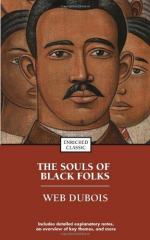|
This section contains 5,826 words (approx. 15 pages at 400 words per page) |

|
In the following essay, Herring examines The Souls of Black Folk within a historical and cultural context, specifically focusing on the book's reaction to minstrelsy.
W.E.B. Du Bois's The Souls of Black Folk is not a book that can be read in ignorance of its historic milieu; to focus exclusively on the text would be to cripple it. First published in 1903, it was written in an America in which the white majority only grudgingly accepted the idea that black folk even had souls. The images most white Americans had of blacks were stereotypical; blacks were a demonized group which had to be controlled by terror or an idealized group of self-sacrificing Uncle Toms and Mammys; they were seen as embodying a sexual potency and promiscuity secretly envied by whites, or they were represented as primitive, laughable clowns. All these stereotypes were given form and (for...
|
This section contains 5,826 words (approx. 15 pages at 400 words per page) |

|




